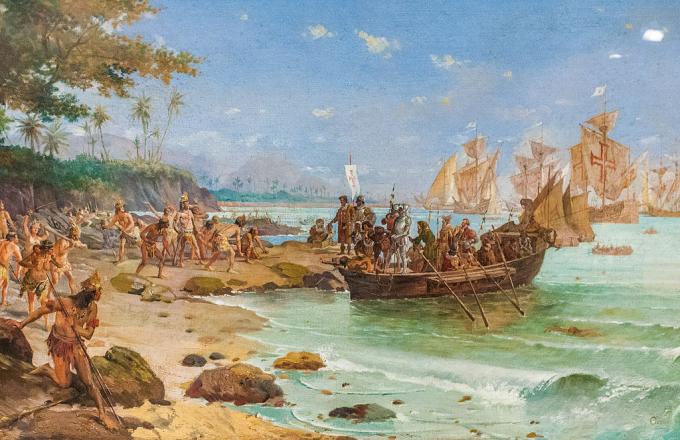Fascism was the governing regime in Italy from 1922 until 1943.
Created by Benito Mussolini in 1919 and made official as a political party in 1922, fascism dominated all aspects of the country such as education, economy, religion and politics.
Characteristics of Fascism
Fascist ideology is characterized by totalitarianism, the defense of a strong and centralized government, where there are no political parties, elections or parliament. It was also against socialist, liberal and democratic ideas.
Likewise, being a totalitarian movement, the National Fascist Party should occupy all sectors of the state and society. For this, the fascists used means such as censorship, political persecution and the arrest of opponents.
They used political propaganda, extolled the leader, the values of the “Italian race” and the past of military conquests to achieve the population's submission.
Thus, they managed to come to power and implement a political regime where everything should be subject to the State and the Party.
Symbol of Fascism
The fascists chose as their symbol the "fascio", a stick formed by several bundles of sticks, tied together with belts, on which an ax blade was located. This object was used by Etruscan kings and later by dictators and Emperors of Ancient Rome.
This symbol was spread on Italian public buildings, flags, uniforms, etc.
italian fascism
After World War I, part of the Italian territory was destroyed and the economy was chaotic. Furthermore, the country resented the victors of the war, as their claims for compensation and territories were not granted in the Treaty of Versailles (1919).
Then, the country was plunged into a struggle between socialists, liberals and fascists, who opposed these two movements.
The growth of the National Fascist Party was relatively rapid. Founded by Benito Mussolini in 1921, the following year, his followers went to Rome and demanded to enter the government.
The maneuver was successful and Mussolini was invited by King Vittorio Manuel III to be the country's prime minister.
Mussolini's government
In 1925, the Fascist Party fraudulently wins the elections and consolidates power. Mussolini took the opportunity to enact the “Fascist Laws” that would leave no doubt about who was in charge of the country.
These laws determined that the National Fascist Party was the only existing party and the Grand Fascist Council, presided over by Mussolini, was the supreme organ of the state. Likewise, the Head of Government (ie Mussolini) should answer only to the King and no longer to Parliament.
It still determined that civil associations should be controlled by the police and fascist unions were the only ones recognized. In turn, civil servants were supposed to take an oath of allegiance to the fascist regime and those who refused were fired.
In 1927, Mussolini presented the "Carta del Lavoro" (Labour Charter), which were the general lines of how labor relations in the country should be conducted. The Charter guaranteed private property and determined that the organization of unions should be carried out by the State.
In the 1930s, fascism took on the discourse of territorial expansion, when declaring war on Ethiopia. The conflict serves to exalt the “Italian race” and its virtues. It is also the time when Mussolini approaches Adolf Hitler and the result (after a lot of Nazi pressure) is the enactment of anti-Semitic laws where Italian Jews lost their civil rights.
Mussolini's rule came to an end in 1943 when Italy began to suffer serious defeats during World War II. Frightened, Mussolini is taken by the Germans to the north, where he founds the ephemeral Republic of Salò.
When he tries to escape to Germany he is discovered by the partisans who capture him, judge him summarily and shoot him.
We have more texts on the subject for you:
- March on Rome
- Totalitarianism

